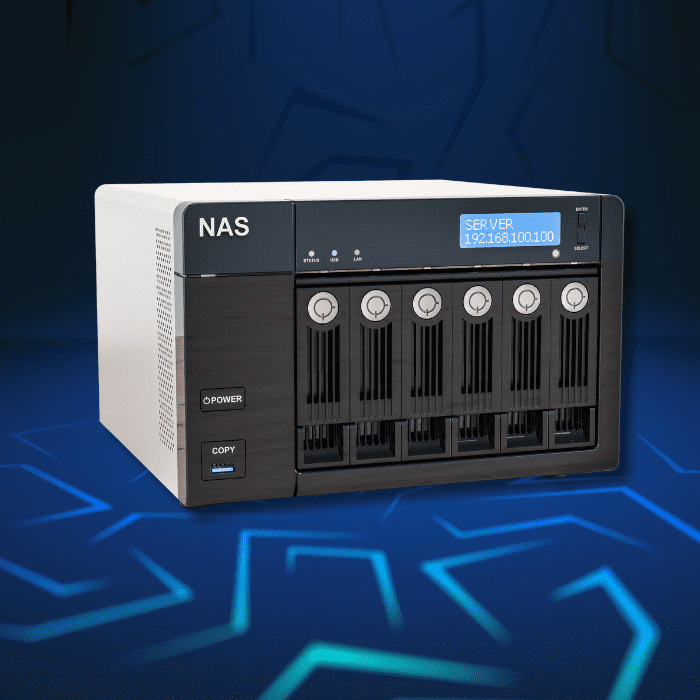Is Windows 10 incredibly slow? Is your Task Manager reporting 100% hard disk usage? Then your hard disk is probably running at full resource utilization.
Hard disk usage is the percentage of the hard disk that is being used by the computer to run programs and perform tasks – it’s more related to hard disk performance than storage capacity.
100% hard disk usage overloads the disks and slows down the system, can overload them and lead to unsatisfactory performance speeds, system crashes and unresponsive systems.
Many of the causes of high hard disk usage may have nothing to do with your computing habits, and can even occur on new devices.
If your hard disk is always at 100% usage, this article will help you understand the causes of this problem, how to solve it and how to avoid it.
Why is my hard disk at 100% usage?
There are several reasons why your hard disk may be at 100% utilization. Some of them are:
Pending Windows system updates
System updates are designed to fix a variety of problems – and one of them could solve your problem of 100% hard disk usage.
That’s why it’s a good idea to keep updates up to date.
Malware and computer viruses
Viruses and malware can generally cause various performance problems on your PC, including a 100% error in hard disk usage.
Problematic page file configuration
Virtual memory is stored in a paging file. Over time, this file can become defective – causing the hard disk to be at 100% disk usage – and need to be replaced.
Hardware problems, such as hard disk or SSD bad sectors
Failed hard disk or SSD sectors – whether structural or physical – can also cause 100% hard disk usage in Windows 10.
Outdated system drivers
Drivers are responsible for controlling all PC hardware, including the hard disk controller – and the disk itself.
This is why outdated system drivers can be the cause of 100% hard disk usage. In this case, find out the model of your motherboard and download the most up-to-date motherboard drivers.
Software malfunction
Malfunctioning software can induce Windows to try to make it work, compromising the performance of the operating system – which can lead to a hard disk with 100% usage. Check the software that is open or the software that is started every time the computer is turned on.
Corrupted system files
Rather than causing 100% usage of your hard disk, corrupted system files can also be a sign that your hard disk is failing.
In this case, make (or update) your backup immediately and replace the hard disk with a new one.
If your hard drive stops working for good before you can back it up, contact a specialized data recovery service before replacing your drive with a new one.
How do I recover data from a hard disk with 100% usage?
If your hard disk is already having problems, shows 100% usage, slows down, crashes or suffers from bad sectors, it’s best not to risk any procedures.
After all, this could end up making the situation worse, causing bigger and more serious failures.
So instead of trying procedures on your own, turn to a professional data recovery service – like the one we offer here at Bot.
With us, you can trust that your data will be recovered in complete safety, as we will open your hard disk in a clean room (an environment that has strictly controlled particles, to preserve the integrity of your hard disk).
How to fix a hard disk with 100% usage?
Below, we’ve listed 7 alternatives you can use if you want to reverse the problem and also considering that there is no important data on the hard disk. Check them out:
From the Command Prompt
One of the ways to reverse a hard disk picture with 100% usage is through the Command Prompt, where you can run Dism (Deployment Image Servicing and Management).
This command can resolve common faults, repair the Windows image and even prepare the system’s pre-installation environment – also called Windows PE (or Windows Preinstallation Environment).
- In the search bar, type in “cmd” and right-click on it. Then select the “Run as administrator” alternative
- As soon as the Command Prompt screen appears, enter the code Dism/Online/Cleanup-Image/ScanHealth and press “Enter”.
- Wait for the cmd to scan. Then type Dism/Online/Cleanup-Image/RestoreHealth and press “Enter”
- Finally, restart your device and confirm that the problem has been solved.
Through advanced system settings
If you want to revert to a hard disk with 100% usage, you can also disable automatic system pages – which you can do via the advanced system settings.
- In the “Windows Control Panel”, select and click on the “View Advanced System Settings” alternative
- Select the “Remote” tab in the window that appears and uncheck the “Allow Remote Assistance connections to this computer” alternative. Then click on “Apply”
- Reopen the “System Properties” tab, go to the “Advanced” tab and select “Performance”, then “Settings”.
- Among the “Performance Options”, find the “Advanced” tab and, once there, click on “Change…”
- The “Virtual Memory” window will open. When it does, uncheck the option “Automatically manage the size of the paging file for all drives” and check the alternative “No paging file”. Finally, click on “Set”
- Restart your device.
Performing a startup cleanup
Some applications that start up together with Windows when you turn on your PC can cause your hard disk to be 100% used.
To prevent this from happening, you can perform a startup cleanup:
- Press Windows + R simultaneously, type MSCOnfig and click on “Ok”.
- In “System Settings”, click on the “Services” tab, check the “Hide all Microsoft services” box, then select “Disable all”.
- Then go to the “Startup Programs” tab and select “Open Task Manager”
- In the “Startup” tab, select software not developed by Microsoft and click on “Disable”
- Restart your PC and check if the problem has been solved.
Delete temporary files
Temporary files are created by your computer when you perform a task, such as browsing the internet or viewing an image.
These files are only used once and can accumulate quickly, slowing down your system, causing performance problems and contributing to high hard disk usage.
They are an inevitable part of running your computer, but you can delete them regularly to free up space.
To do this:
- Use the shortcut Windows + R, type “temp” in the text field and click “Ok”. This will give you access to the system’s temporary files
- Select all the files from the list that appears on the screen and delete them
- Use the shortcut Windows + R again, type %temp% and click “Ok”. You will access the user’s temporary files
- Delete all temporary files that are not running using the Windows + R shortcut, using the “Prefetch” code. Then select the ones shown by the address and also delete the records that may be causing the problems.
With automatic restore points
You can also disable and limit the space usage of automatic restore points to reverse cases of 100% hard disk usage in Windows 10. After all, they take up space on the hard disk – which usually causes the problem.
If you do resort to this solution, bear in mind that by disabling automatic restore points, you won’t have the smart bookmarks generated by Windows in case you need urgent backups.
That said, let’s go through the solution step by step:
- Follow the path “Control Panel” > “Create restore point”
- When the “System Properties” window appears, click on “Configure”
- Then check the “Disable system protection” checkbox, leaving the “Maximum usage” meter at 0. Then click “Ok”.
Removing malware
It’s common for malware to cause your hard disk to reach 100% usage, so identifying and eliminating it can help solve the problem.
To do this, you can use paid antivirus software or even Windows Defender – the operating system’s native software.
If you choose the latter, follow these steps:
- In the Windows 10 search field, type “Windows Security” and click on the first option in the list
- Next, click on “Virus and threat protection” and enter “Scan options”
- Then select the “Full scan” alternative and click on “Scan now”. Wait for Windows Defender to finish scanning
- Finally, eliminate any potential threats.
Resetting virtual memory in Windows 10
Virtual memory is a storage management technique that allows your computer’s RAM to borrow space from your hard disk when it’s overloaded.
Thus, virtual memory temporarily takes data from your RAM and transfers it to your hard disk – which is a great strategy on your system’s part, but can also contribute to a 100% hard disk in Windows 10.
To reverse this problem, you can reset the virtual memory in Windows 10.
- First, go to “System Properties” and click on “Settings” in the “Performance” tab
- On the “Advanced” tab, click on “Change”
- Check that the box “Automatically manage the size of the paging file” is checked
- Finally, click “Ok” and restart the device. This will inhibit the use of virtual memory and can improve disk performance.
How to avoid a 100% hard disk in Windows 10?
Some precautions can help you avoid a 100% hard disk in Windows 10. Some of them are:
- Keep your Windows 10 updates up to date
- Have a good antivirus, keep Windows Defender activated and run constant scans to eliminate possible malware
- Avoid changing the operating system’s paging files – this is a space on the hard disk that is used by your system for virtual memory and changing them can damage your hard disk
- Keep your system drivers up to date.
Conclusion
Using your hard disk at 100%, rather than causing slowdowns, can lead to various other problems for your PC.
This complication can be caused by various reasons, including: pending updates, the presence of malware and viruses, unconfigured page archiving, hardware failures, outdated system drivers, software malfunctions and corrupted system files.
There are several ways to solve hard disk usage with 100%: using the Command Prompt, through advanced system settings, cleaning up startup, deleting temporary files, removing Windows restore points, removing malware and/or resetting the operating system’s memory.
In addition, to prevent your PC from reaching 100% hard disk usage, you should keep Windows and driver updates up to date, use a good antivirus (constantly scanning for viruses) and not alter the operating system’s paging files.
In some cases, you have to reinstall Windows to fix this problem – which can lead to data loss.
If this happens to you, turn to Bot’s professional data recovery service.
Here, as well as guaranteeing the integrity of your hard disk (through the clean room), we will collect the device from any address in Portugal.
We can also give you a quote for data recovery within 48 hours!
Become one of our more than 100,000 solved cases: start your data recovery with Bot now!



